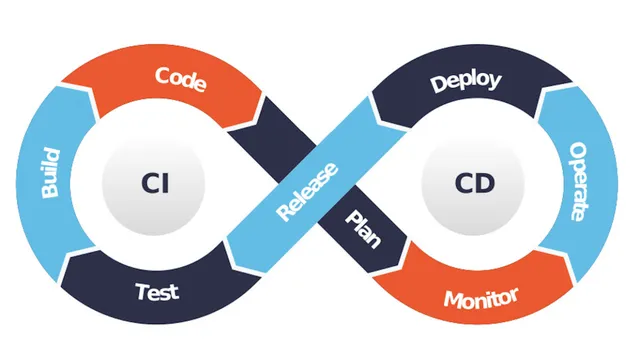Continuous Integration (CI) is a software development practice that emphasizes frequent integration of code changes into a shared repository, followed by automated testing and build processes. This article explores the principles, benefits, key practices, challenges, and future trends of Continuous Integration, highlighting its critical role in enhancing collaboration, code quality, and development efficiency.
Principles of Continuous Integration
Continuous Integration is guided by several key principles aimed at improving software development practices:
- Frequent Code Integration: Developers integrate their code changes into a central repository multiple times a day, ensuring that changes are small and manageable.
- Automated Builds: Code changes trigger automated build processes that compile, package, and verify the application, ensuring consistency and reducing manual errors.
- Automated Testing: Automated tests, including unit tests, integration tests, and acceptance tests, are executed automatically to validate code changes and detect issues early.
- Immediate Feedback: Developers receive immediate feedback on the status of their code changes, allowing them to address issues promptly and maintain code quality.
Key Practices in Continuous Integration
- Version Control: Using a version control system (e.g., Git, SVN) to manage and track changes to the codebase, enabling collaboration and facilitating code integration.
- Automated Build Tools: Employing build automation tools (e.g., Jenkins, Travis CI, CircleCI) to automate compilation, packaging, and deployment processes across different environments.
- Test Automation: Integrating automated testing frameworks (e.g., JUnit, Selenium) to execute tests automatically and ensure that new code changes do not introduce regressions.
- Continuous Inspection: Implementing code quality analysis tools (e.g., SonarQube, CodeClimate) to perform static code analysis, identify code smells, and enforce coding standards.
Benefits of Continuous Integration
- Early Bug Detection: Identifying and fixing bugs early in the development process through automated testing and immediate feedback, reducing the cost and effort of bug fixing later.
- Increased Productivity: Streamlining development workflows and reducing manual tasks allow developers to focus more on coding and less on repetitive tasks.
- Improved Code Quality: Enforcing coding standards, performing code reviews, and running automated tests contribute to higher code quality and maintainability.
- Faster Time-to-Market: Rapid integration and testing of code changes enable faster delivery of new features and updates to end-users, improving competitiveness.
Challenges in Continuous Integration
- Integration Complexity: Managing dependencies and ensuring compatibility between different modules or components can be challenging, especially in large and complex projects.
- Build Failures: Dealing with build failures due to configuration issues, environment inconsistencies, or integration conflicts requires troubleshooting and resolution.
- Test Coverage: Ensuring comprehensive test coverage across different layers (unit, integration, acceptance) and scenarios to minimize the risk of regressions and bugs.
- Organizational Culture: Overcoming resistance to change and promoting collaboration among developers, testers, and operations teams to adopt CI practices effectively.
Future Trends in Continuous Integration
- Cloud-native CI/CD: Embracing cloud-native technologies and serverless computing for scalable and cost-effective CI/CD pipelines.
- Containerization: Leveraging container orchestration platforms (e.g., Kubernetes) for consistent and portable deployment of applications across hybrid and multi-cloud environments.
- AI and Machine Learning: Integrating AI-driven tools for predictive analytics, anomaly detection, and automated decision-making in CI/CD processes.
- GitOps: Implementing GitOps principles for managing infrastructure as code (IaC) and declarative continuous delivery pipelines directly from Git repositories.
Conclusion
Continuous Integration is a foundational practice in modern software development, enabling teams to deliver high-quality software products faster and more efficiently. By automating build, test, and integration processes, CI promotes collaboration, improves code quality, and accelerates time-to-market. As organizations continue to adopt CI practices, addressing challenges, embracing emerging technologies, and fostering a culture of continuous improvement will be essential for achieving agility, scalability, and competitiveness in a dynamic and evolving digital landscape. By integrating CI with other DevOps practices, organizations can optimize software delivery pipelines, enhance developer productivity, and deliver value to customers more effectively.
Top of Form
Bottom of Form





+ There are no comments
Add yours